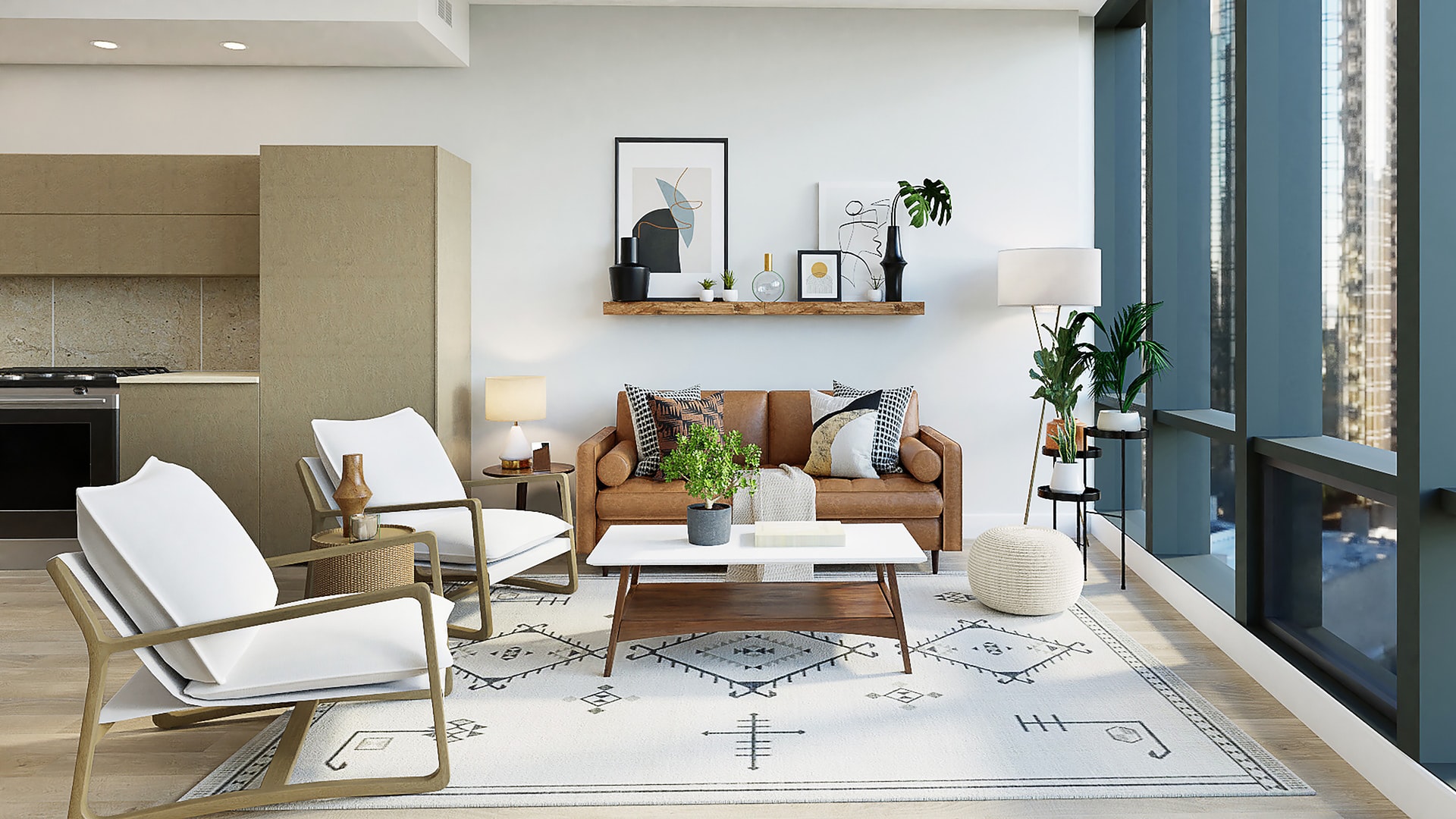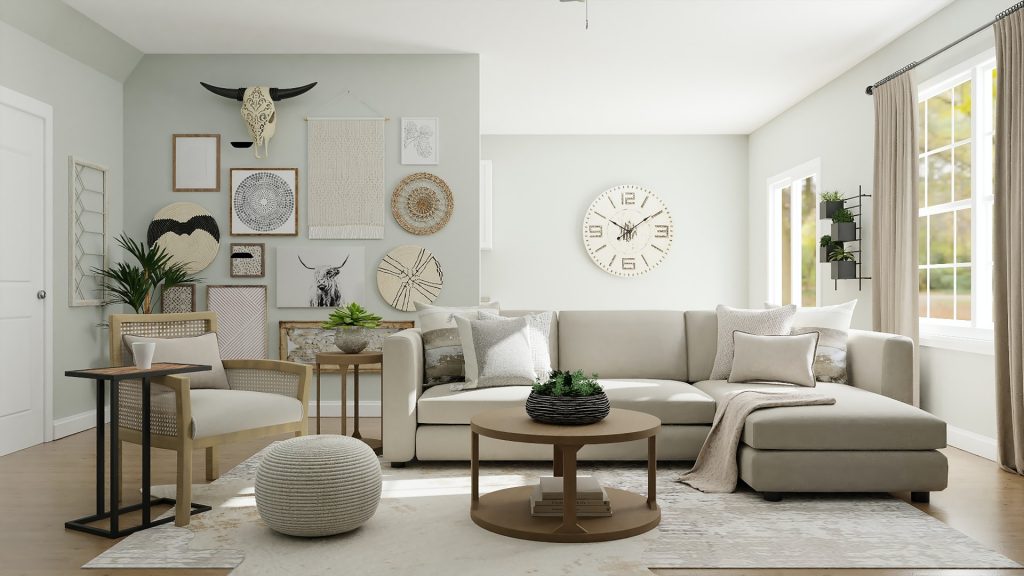You want to make your living environment as comfortable and appealing as possible, whether you live in a city flat or a farm cottage. But getting that stunning style you see on design shows isn’t always easy — despite the fact that they make it look so simple.
Here’s a little known fact: those show hosts are either skilled decorators or obtain their ideas from expert Interior Designers/Decorators. And we’re just average people who make mistakes when it comes to design. But that’s no excuse to give up and be irritated by your mismatched settings and cramped surroundings.
Designing or decorating a room without a plan is analogous to cooking or baking without a recipe: it could go horribly wrong.
To save you time and money, we’ve put up a list of guides4homeowners.co.uk simple interior design for beginners, complete with well-known dos and don’ts.
1. Avoid cramming all of your furniture against the walls.
It’s not a Tetris game when it comes to furniture arranging. To make your room seem more fascinating, give your furnishings some breathing room.
Allowing furniture to “float” a few centimetres away from the walls, for example, in your living room, can assist establish a discussion grouping.
2. Choose your paint color after you’ve chosen your paint color.
Some interior design advice is plain bizarre, such as this one suggesting that picking the colors to use on your walls should be one of your last selections. You may choose from a spectrum of colors, and looking at how furniture and ornamental items are positioned in a room can help you choose the right one.
Furthermore, it is far more difficult to acquire upholstery or accessories that properly match your wall colors than vice versa in terms of simple room design.
 3. Don’t use too many different colors.
3. Don’t use too many different colors.
You don’t need to paint every room in your house a different color if you want it to feel harmonious.
To make things easy on yourself, choose three major colors to use throughout your home. Then, for a fresh design that is yet consistent, choose other tints of those core colors (for example, Arctic blue differs considerably from cobalt blue).
4. In a tiny space, choose bold colors.
Small areas that you travel through can really highlight a color. While it’s true that bold colors can make a room appear weighty or dark, using a dark tone in your pantry or hallway is a different story.
Choosing dramatic colors in little places makes the entire house appear brighter and larger, because it transforms a small area that you may overlook into a focal point that draws your attention.
5. Take advantage of your lighting.
You should already be aware that lighting will be covered while discussing interior design ideas for small residences. In fact, lighting should never be an afterthought when it comes to budgeting. A well-chosen light fixture may drastically alter the look and feel of a space.
Don’t be scared to use a statement piece to show off your personality. Also, keep in mind that a dimmer switch allows you to set the appropriate ambiance at any time.
6. When it comes to sitting, don’t be egotistical.
Although the adage “less is more” is true, don’t expect your visitors to remain standing while you entertain them. You’ll need chairs that guests can pull up and space out in the living area to enable for a free-flowing chat.
If you’re short on space, invest in a couple of sultry dining chairs that can be slid into the living room.
7. Experiment with textures.
Texture gives a room depth and appeal. When we see a room that uses smooths, roughs, shines, and dulls – but not excessively – it appeals to our visual and tactile senses.
A rug, a piece of wall art, a scatter cushion on the couch, or an intriguing coffee table can all be used to provide texture.
8. Don’t poke fun of your walls.
That is to say, on vast, bare walls, don’t choose little pieces of art or mirrors. They’ll be swallowed entirely by that vast empty vacuum. Either go for broke or take a different path.
Walls with modular shelves and busy wallpaper have a lovely character. Or, to spice up that enormous wall, join the trendy trend of wall decal words.
9. Keep an eye on your hallway.
Your hallway is an excellent place for you to showcase your personal flair. It doesn’t have to be anything great, though; any statement is preferable to none at all.
To add color and individuality, use paint or patterned wallpaper, and consider hanging a stunning mirror or artwork. A mirror is particularly useful since it reflects light and gives the appearance of additional space.
When you enter your home, use a table to put your mail, keys, and other small goods.
10. Avoid using small potted plants.
Plants, like everything else in your home, should make a statement – or else they should be left outside. And, while little pots were fashionable in the 1970s, modern interior design has progressed.
Instead, choose a single huge tree or plant in a pot. A slew of miniature indoor plants will just add to the cluttered appearance of your area.
11. Accent pieces should be used.
Trust a few accent pieces to create the desired design without becoming overpowering.
Display a sophisticated collection of seashells or coral on a side table or bookshelf if you have a fondness for beach cottages. This will appear far more refined than planning a full beach-themed space.
 12. Don’t expect everything to be in sync.
12. Don’t expect everything to be in sync.
Catalogues for interior design are intended to sell items, not to teach you how you should live. Nobody lives like that, so don’t try too hard to imitate it.
Instead of going for a showroom look, go for a lived-in effect by making your room’s décor varied. Use a variety of items and accents to draw attention to your space and provide interest.
Color theory and meanings in interior design
Even with a simple interior design, the colors you choose should never be an afterthought. Because, according to color therapy, different colors have distinct meanings (and, thus, affect us differently).
• Red: a fiery, forceful, and passionate color.
• Orange: energizing and charismatic
• Yellow: energizing, friendly, and enjoyable
• Green: Prosperity, growth, and generosity
• Blue: educated, authoritative, and content
Purple is a creative, sensitive, and devoted color (can also be seen as a royal colour)
• Black: Elegant, mysterious, and self-assured.
• White: Innocent, wise, and pure.
Keep in mind that if you want to increase or boost these qualities any more, you’ll need to change the color’s value, lightness, or darkness.





More Stories
Why Buying A Condo Would Be Beneficial For You?
Step of Building a Warehouse
What Do You Need To Know About Crushed Velvet Beds?